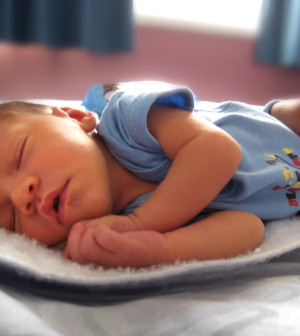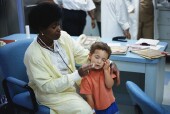- Doctors Describe Texas Dairy Farm Worker’s Case of Bird Flu
- Does Preschool Boost Kids’ Long-Term Academic Success? Study Finds Mixed Results
- AI Might Spot Rare Diseases in Patients Years Earlier
- An Orangutan Healed Himself With Medicinal Plant
- Quit-Smoking Meds Not Working for You? Try Upping the Dose
- Fewer Americans Are Suffering Most Dangerous Form of Heart Attack
- Even Skipping Meat for One Meal Helps Liver Disease Patients
- You May Not Have to Fast Before Catheter-Based Heart Test, Study Suggests
- EPA Earmarks $3 Billion to Replace Lead Pipes Nationwide
- Johnson & Johnson Will Pay $6.5 Billion to Settle Talc Ovarian Cancer Lawsuits
Toddlers Hurt in Falls Often Not Warned About Climbing on Furniture


Toddlers who wound up in the emergency room after falls at home were more likely to have parents who did not use safety gates or teach their kids not to climb onto kitchen counters or furniture, a new study finds.
In the United States, 1 million children are treated in the ER each year for injuries related to falls in the home, the researchers noted.
Most of these falls involve chairs, beds, baby walkers, bouncers, changing tables and high chairs, according to the study.
In this British study, researchers looked at more than 670 children aged 4 and younger who were seen at medical centers for injuries suffered in falls at home. The most common types of injuries were bangs on the head (59 percent), cuts and grazes that did not require stitches (19 percent), and fractures (14 percent).
Sixty percent of the children did not require treatment, 29 percent were treated in the emergency department, 7 percent were treated and discharged with follow-up appointments and 4 percent were admitted to the hospital.
Patients aged 1 year and younger were more likely to have been left on raised surfaces, had their diapers changed on raised surfaces and to have been put in car seats or bouncing seats on raised surfaces. Children aged 3 and older were more likely to have played or climbed on furniture.
“If our estimated associations are causal, some falls from furniture may be prevented by incorporating fall-prevention advice into child health surveillance programs, personal child health records, home safety assessments and other child health contacts,” study author Denise Kendrick, from the University of Nottingham in England, and her colleagues concluded.
The study was published online Dec. 1 in the journal JAMA Pediatrics.
More information
The U.S. Centers for Disease Control and Prevention has more about children and falls.
Source: HealthDay
Copyright © 2024 HealthDay. All rights reserved.










